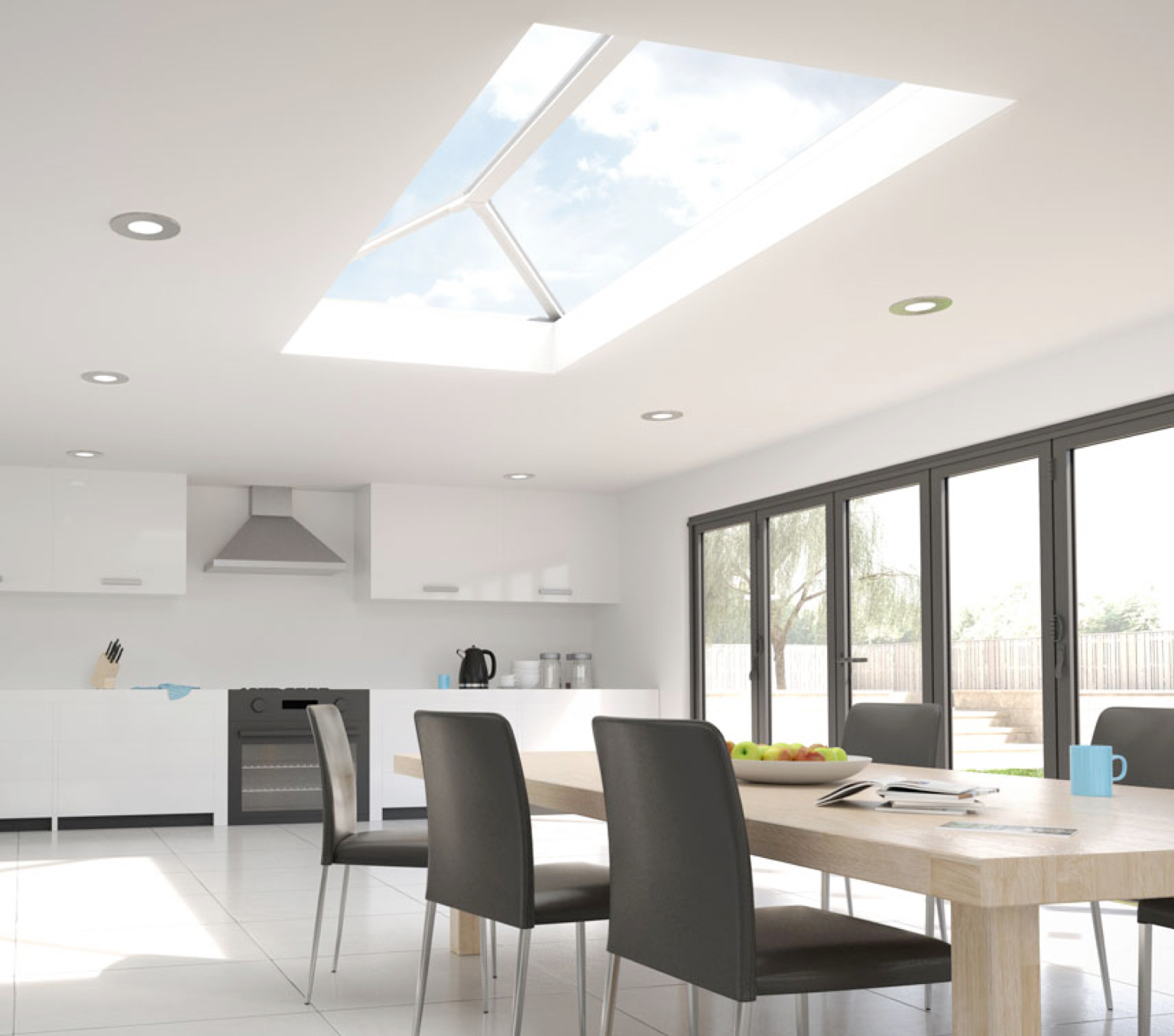Transform your Home with Roof Lanterns

Roof lanterns for flat roofs have become increasingly popular in UK home design, offering a stunning way to enhance residential and commercial spaces. As flat roof lanterns continue to gain traction, more homeowners and businesses are recognising their potential to transform living areas with an influx of natural light and architectural elegance. Whether you’re seeking to brighten up a kitchen-diner extension or add a touch of sophistication to a commercial property, choosing the best roof lanterns UK homeowners and businesses can buy is essential for achieving a remarkable result. Stratus Lantern Roofs offer an ideal solution, combining superior design with exceptional performance to help you create light-filled, airy spaces that redefine your interior environment.
How Roof Lanterns Can Transform Your Home
Bringing Natural Light Indoors:
One of the most significant advantages of installing a roof lantern is its ability to flood your home with natural light. Unlike traditional windows, which can be limited by walls and other obstructions, roof lanterns for flat roofs bring light in from above, illuminating the entire room. This brightens your living spaces and creates a more inviting and uplifting atmosphere.
Natural light has numerous benefits, including improving mood, reducing eye strain, and even enhancing productivity. For those working from home or spending extended periods indoors, the increased daylight can make a substantial difference to your overall well-being.
Enhancing Aesthetic Appeal:
Flat roof lanterns also add a distinct architectural feature to your home, serving as a focal point that draws the eye upward. Whether your home’s style is contemporary or traditional, a well-designed roof lantern can complement and enhance your existing decor. The clean lines and expansive glass panels create a sense of openness, making even small rooms feel larger and more spacious.
In addition to boosting your home’s aesthetic appeal, roof lanterns can also increase your property’s value. Potential buyers are often drawn to homes that offer bright, airy spaces with modern features, and a beautifully integrated roof lantern can be a significant selling point.
Creating a Seamless Connection with the Outdoors:
One of the unique aspects of roof lanterns is their ability to create a seamless connection between your indoor spaces and the outdoors. By strategically positioning a roof lantern to maximise views of the sky, trees, or surrounding landscape, you can enjoy the beauty of nature from the comfort of your home. This connection to the outdoors can make your living spaces feel more dynamic and alive, especially during the changing seasons.
Strategic Placement for Maximum Impact
Positioning Considerations:
Placing your roof lantern is crucial to achieving the desired effect in your home. Popular locations include kitchens, dining rooms, living rooms, and extensions, where natural light is most needed. When positioning a roof lantern, consider the orientation of your home and the sun’s movement throughout the day. A well-placed roof lantern can ensure your room is bathed in natural light from morning until evening.
For extensions, positioning the roof lantern centrally can create a balanced, harmonious look that enhances the architectural flow of the space. Placing the lantern above a seating area or dining table in living rooms can create a stunning focal point that draws guests’ attention.
Single vs. Multiple Lanterns:
Consider whether a single large roof lantern or multiple smaller ones would best suit your space when planning your design. A single, expansive lantern can create a dramatic impact, providing uninterrupted sky views and a powerful influx of light. However, multiple smaller lanterns might be more effective in larger or more complex spaces. This approach allows for an even distribution of light and can create a visually striking design that complements the room’s architecture.
Using multiple lanterns also gives you greater flexibility in design, enabling you to highlight different areas of a room or create a unique pattern that adds visual interest.
Integration with Existing Architecture:
To ensure your roof lantern enhances your home’s existing architecture, consider factors such as roof structure, ceiling height, and overall design style. A minimalist, contemporary roof lantern can complement sleek interiors and open-plan layouts in modern homes. In contrast, traditional homes might benefit from more ornate designs that echo classic architectural elements.
Working with existing roof structures is essential when integrating a roof lantern. Consulting with an architect or designer can help you navigate any structural challenges and ensure that your roof lantern is both aesthetically pleasing and structurally sound.
Key Considerations When Choosing a Roof Lantern
Selecting the right roof lantern involves considering several factors to ensure it meets your needs and complements your home. Here are some key considerations:
- Size and Scale: The size of your roof lantern should be proportionate to the room it will illuminate. A too large lantern can overwhelm the space, while one that is too small might not provide enough light or visual impact. Measure your room carefully and consult with professionals to determine the ideal size for your project.
- Thermal Efficiency: A high-quality roof lantern should enhance your home’s look and contribute to its energy efficiency. Look for lanterns with low U-values, such as those offered by Stratus Lantern Roofs, which can provide excellent thermal performance. This ensures your home stays warm in the winter and cool in the summer, helping to reduce energy bills.
- Glazing Options: The type of glazing you choose can significantly impact the performance and appearance of your roof lantern. Options like neutral or blue-tinted glazing can control the amount of light and heat entering your home. Features like Argon-filled double glazing, 94% UV resistance, and up to 83% solar rejection can enhance comfort and protect your interiors from fading.
- Customisation: Consider customising your roof lantern to achieve seamless integration with your home’s design. Stratus Lantern Roofs offer bespoke RAL colours for both internal and external finishes, allowing you to match or contrast your lantern with your interior decor. This level of customisation ensures that your roof lantern complements your home’s unique style.
Investing time in considering these factors will help ensure that your roof lantern not only meets your practical needs but also enhances the beauty and value of your home. With Stratus Lantern Roofs, you can choose from various configurations and customisation options to find the perfect solution for your space.
Showcasing the Stratus Lantern Roofs Product Range
Stratus Lantern Roofs is a leading name in the UK market, synonymous with quality, innovation, and exceptional design. With a long-standing reputation for delivering premium roof lanterns, Stratus has become the go-to choice for homeowners and businesses who seek to enhance their properties with light-filled, stylish, and energy-efficient solutions.
Brief History and Reputation of Stratus Lantern Roofs in the UK Market:
Established with a commitment to excellence, Stratus Lantern Roofs has earned its place as a trusted brand in the UK. Our dedication to crafting superior roof lanterns, designed and manufactured to the highest standards, has allowed us to build a strong reputation for reliability and innovation. Over the years, we have consistently pushed the boundaries of design and performance, making us a preferred choice for those looking to add aesthetic value and practical benefits to their homes or commercial spaces.
Overview of Our Commitment to Quality and Innovation:
At Stratus Lantern Roofs, quality and innovation are at the heart of everything we do. Our products are meticulously designed to not only meet but exceed industry standards. We continually invest in the latest technology and materials to ensure that every roof lantern we produce delivers outstanding thermal performance, durability, and aesthetic appeal. Our focus on innovation means we are always exploring new ways to enhance our products, whether through advanced glazing options, bespoke colour choices, or cutting-edge thermal break technology.
Four distinct configurations, catering to different architectural styles and functional needs:
- Contemporary Flat Roof Lanterns: This minimalist design supports the ridge solely with hip rafters, offering a clean, modern look that is perfect for contemporary homes.
- 2-Way Flat Roof Lanterns: Ideal for narrower spaces, the 2-Way configuration allows for a linear arrangement of glass panels, creating a sleek and elegant appearance.
- 3-Way Flat Roof Lanterns: This versatile option is suitable for larger spaces. It provides a more traditional roof lantern look with three directional beams that enhance structural integrity and visual appeal.
- Square Flat Roof Lanterns: Perfect for square-shaped rooms or extensions, this configuration offers a balanced and symmetrical design that maximises natural light from all angles.
Each configuration is designed with both form and function in mind, ensuring that no matter your home’s style, there is a Stratus Lantern Roof that will complement and enhance its design.
Outstanding Features and Benefits:
- Glazing: Choose from neutral or blue glazing, with Argon-filled double-glazed units that offer 94% UV resistance to prevent fabric fade and up to 83% solar rejection to keep your interiors cool in the summer.
- Thermal Efficiency: Enjoy U-values as low as 0.9, thanks to our advanced thermal break technology. This technology helps keep your home warm in the winter and cool in the summer, reducing energy bills and increasing comfort.
- Design and Durability: Our roof lanterns feature a hard-wearing aluminium exterior, available in bespoke RAL colours to match or contrast with your interior design. The innovative, minimalist design ensures a sleek appearance with maximum durability.
- Size and Customisation: Available in sizes up to 3m x 6m, our roof lanterns offer ultimate customisation, allowing you to choose colours and finishes that perfectly suit your space.
- 10-Year Guarantee: We stand behind the quality of our products and offer a comprehensive 10-year guarantee for complete peace of mind.
Stratus Lantern Roofs is the ideal choice for homeowners investing in a high-quality, thermally efficient, and aesthetically pleasing roof lantern. Our commitment to superior design, innovation, and customer satisfaction sets us apart in the market. Whether you are renovating an existing space or building a new extension, Stratus Lantern Roofs can transform your home with natural light and architectural elegance. We invite you to explore our product range, request a personalised quote, or contact us on 0800 046 3924 for a consultation to discover how we can help bring your vision to life.


 Directly From Manufacturer
Directly From Manufacturer


